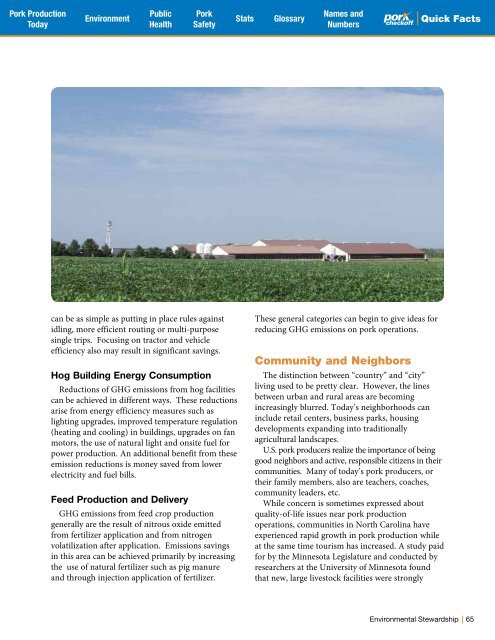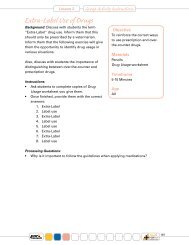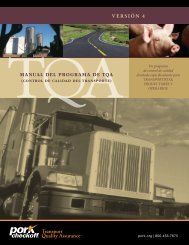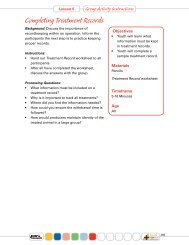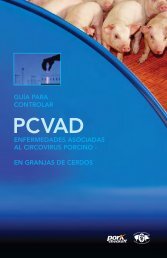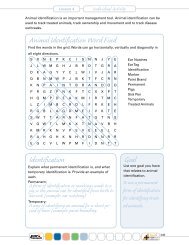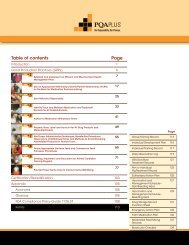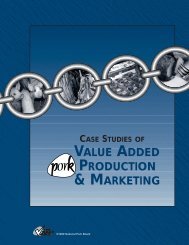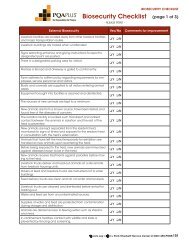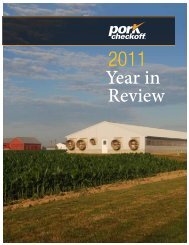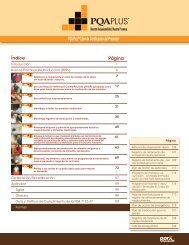The Pork Industry at a Glance - National Pork Board
The Pork Industry at a Glance - National Pork Board
The Pork Industry at a Glance - National Pork Board
Create successful ePaper yourself
Turn your PDF publications into a flip-book with our unique Google optimized e-Paper software.
<strong>Pork</strong> Production<br />
Public<br />
<strong>Pork</strong><br />
Names and<br />
Environment<br />
St<strong>at</strong>s<br />
Glossary<br />
Today Health Safety Numbers<br />
Quick Facts<br />
Quick Facts<br />
can be as simple as putting in place rules against<br />
idling, more efficient routing or multi-purpose<br />
single trips. Focusing on tractor and vehicle<br />
efficiency also may result in significant savings.<br />
Hog Building Energy Consumption<br />
Reductions of GHG emissions from hog facilities<br />
can be achieved in different ways. <strong>The</strong>se reductions<br />
arise from energy efficiency measures such as<br />
lighting upgrades, improved temper<strong>at</strong>ure regul<strong>at</strong>ion<br />
(he<strong>at</strong>ing and cooling) in buildings, upgrades on fan<br />
motors, the use of n<strong>at</strong>ural light and onsite fuel for<br />
power production. An additional benefit from these<br />
emission reductions is money saved from lower<br />
electricity and fuel bills.<br />
Feed Production and Delivery<br />
GHG emissions from feed crop production<br />
generally are the result of nitrous oxide emitted<br />
from fertilizer applic<strong>at</strong>ion and from nitrogen<br />
vol<strong>at</strong>iliz<strong>at</strong>ion after applic<strong>at</strong>ion. Emissions savings<br />
in this area can be achieved primarily by increasing<br />
the use of n<strong>at</strong>ural fertilizer such as pig manure<br />
and through injection applic<strong>at</strong>ion of fertilizer.<br />
<strong>The</strong>se general c<strong>at</strong>egories can begin to give ideas for<br />
reducing GHG emissions on pork oper<strong>at</strong>ions.<br />
Community and Neighbors<br />
<strong>The</strong> distinction between “country” and “city”<br />
living used to be pretty clear. However, the lines<br />
between urban and rural areas are becoming<br />
increasingly blurred. Today’s neighborhoods can<br />
include retail centers, business parks, housing<br />
developments expanding into traditionally<br />
agricultural landscapes.<br />
U.S. pork producers realize the importance of being<br />
good neighbors and active, responsible citizens in their<br />
communities. Many of today’s pork producers, or<br />
their family members, also are teachers, coaches,<br />
community leaders, etc.<br />
While concern is sometimes expressed about<br />
quality-of-life issues near pork production<br />
oper<strong>at</strong>ions, communities in North Carolina have<br />
experienced rapid growth in pork production while<br />
<strong>at</strong> the same time tourism has increased. A study paid<br />
for by the Minnesota Legisl<strong>at</strong>ure and conducted by<br />
researchers <strong>at</strong> the University of Minnesota found<br />
th<strong>at</strong> new, large livestock facilities were strongly<br />
Environmental Stewardship<br />
65


